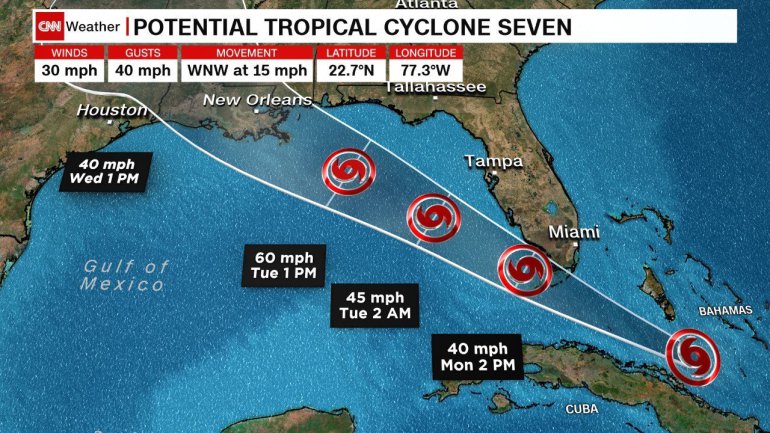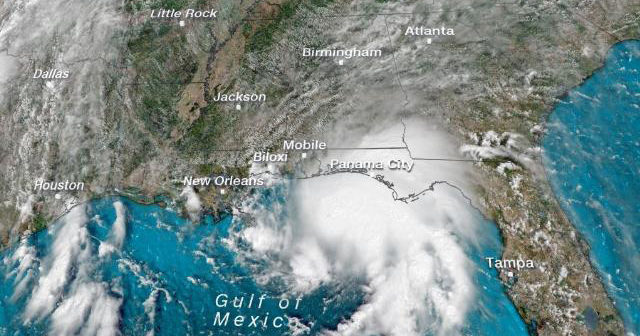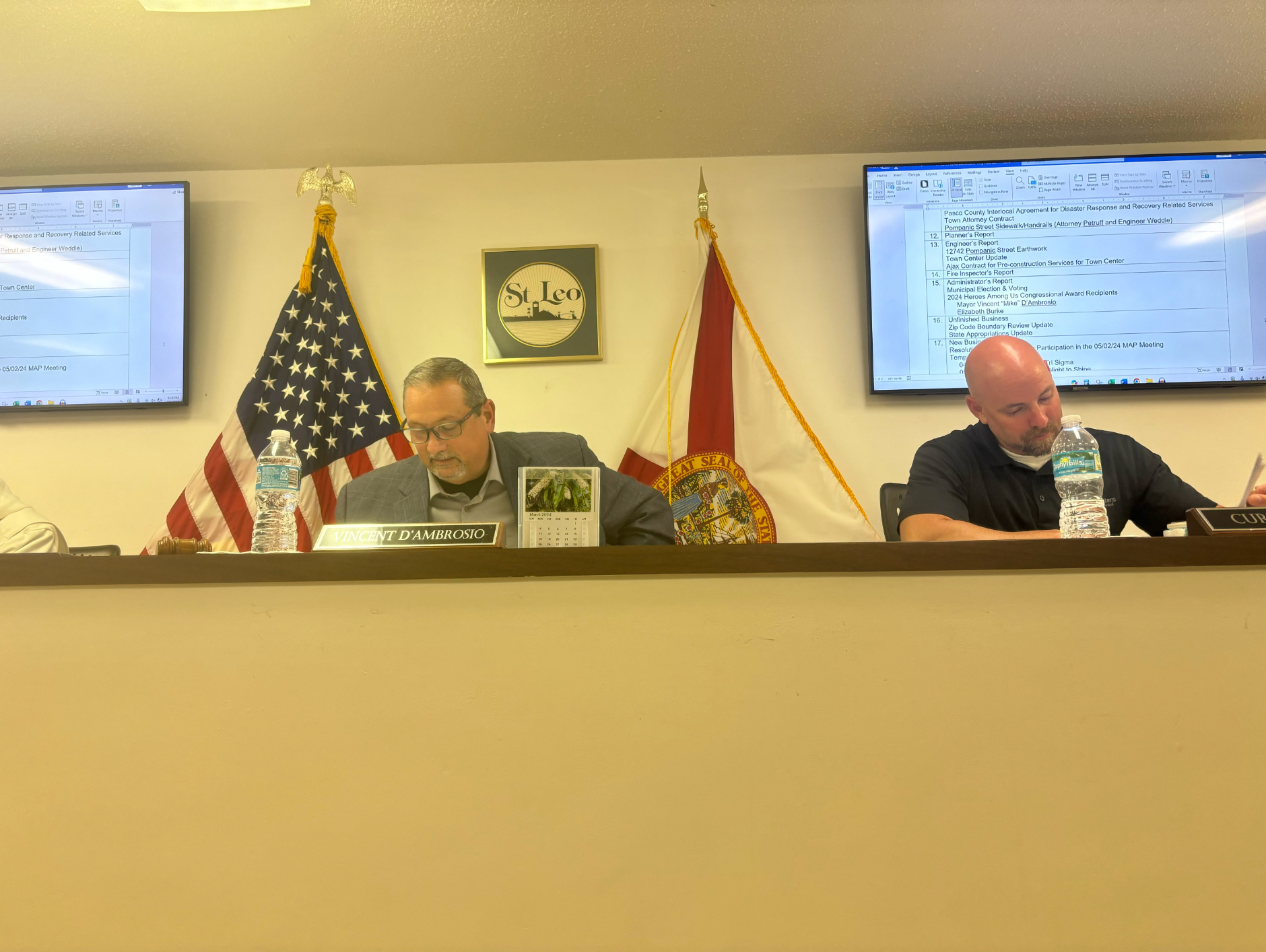With the threat of Storm Gordon behind us, it is evident that hurricane season is in full swing and it is important to remember the damage that can be caused by hurricanes. Many hurricanes affected the Saint Leo community last year, in particular. The Corpus Christi center was devastated by Hurricane Harvey in late August. In early September University Campus as well as several Centers, such as Key West, Savannah Center, Lake City Center and North Charleston Center, were affected by hurricane Irma.
The locations affected were closed for several days. Also, students who remained on University Campus last year during the hurricane stayed in shelters on campus for about a day. Although there were many emergency procedures followed last year, many new students who attend Saint Leo may have never experienced a hurricane as they either live out of state or out of the country where the risk of a potential hurricane is much lower. As such, there are many students who might be unsure as to what precautions to take in to keep themselves safe during a hurricane.
“We constantly track storms using the weather station we have on campus,” said Jose Caban, Director of Plant Operations.
With the abilities of current technology, hurricanes can often be tracked for several days and warnings will be issued through Campus Safety. Saint Leo University believes it is in the best interest of students who live close enough to campus to return home in the case of a hurricane warning. For those who cannot return to their homes or families at such a point in time, Saint Leo has several emergency procedures that will go into effect.
Residence Life usually distributes information to boost students’ awareness of certain protocols and the emergency plan in the case of a hurricane hitting the University. With threats of a hurricane approaching, information regarding the severity and required actions usually are distributed via the main University webpage, displayed on flyers posted centrally in all residence halls, sent to student’s campus email and provided to RA staff.
There are numerous protocols in place to guarantee the students’ safety.
“All residence life staff are required to stay on campus before, during and after the storm. Residence life staff will be responsible for specific areas to ensure the safety of residents,” said Matthew Rexford, a former graduate assistant for Residence Life. “There are specific areas designated for each student on campus to seek shelter. As a department, we educate RA’s to be equipped with the information and resources necessary to keep everyone safe.”
There are numerous procedures, and many of these protocols were implemented last year during the wake of Hurricane Irma. Many residence staff, including RAs, have to be on campus to carry out these protocols. These protocols were implemented last year for Hurricane Irma. One of the RAs working last year was Vincia Mitchell, a senior, social work major. Coming from Jamaica, she is accustomed to hurricanes; however, last year it was a different experience for her since she was on campus and had to work for Res-Life, ensuring students’ safety on campus.
“My experience last year was different from my previous experiences with hurricanes. This time, I was a Resident Assistant, which indicated that my role and priorities shifted to caring to the needs of my residents,” said Mitchell. “As an essential personnel at the university, I know it was my job to assist the students that chose to remain on campus to the best of my ability.”
Depending on the severity of the storm, a “shelter-in-place” warning may be issued. In this case, students will be required to move to a designated location with regards to their current housing assignment. These make-shift shelters will be operated by Student Affairs and Campus Operation Staff, and they will provide food in limited quantities so as to outlast the storm if need be.
Hurricane watches are warnings issued when a hurricane is considered to be a possible threat to impact the area within the following 24 hours. Once a hurricane watch is in place, there will be mandatory information meetings in residence halls. Also, students departing campus must check out with their RA and inform them as to with whom they will be staying as well as contact information. Additionally, students departing campus must prepare their rooms by following a set of guidelines provided by their RA.
In the case of a minor hurricane or indirect hit, students who remain on campus will need to adhere to the following relocation assignments: students in Marmion, Snyder, Henderson and Benoit will remain in their respective residence halls. Students in the Roderick and Alumni residence halls will relocate to Apartment 6, students in Apartments 2, as well as students who reside on East Campus will relocate to Apartment 1, students in Apartment 3 will relocate to Apartment 4 and finally, students in Apartment 5 will relocate to Apartment 6.
In the case of a rated hurricane, designated as categories one through five, students would be relocated to one of three buildings for their safety. Students would be asked to take shelter in Lewis Hall, the Marion Bowman Activities Center and Saint Edward’s Hall as these buildings are made of poured concrete in order to withstand severe weather.

Tropical storm Gordon hit South Florida and then skirted Central Florida, resulting in Saint Leo University Campus only getting the outer band of the storm.
When relocating to a hurricane shelter, it is important to remember that they are not designed for the comfort of occupants, but rather their safety. Only the basic amenities will be available to students, and great care must be taken to avoid wastage.
“Saint Leo is set up to function using a series of wells, so we will always have water,” said Caban. “The campus is also equipped with two main generators to power lights and other amenities to select buildings during a hurricane.”
When relocating to a temporary shelter, students should pack only what is necessary such as a pillow, blanket or sleeping bag, an extra pair of glasses or contacts, cards, board games, books, a flashlight with fresh batteries, a form of identification, enough cash to last for two weeks, toiletries, sweatshirts, snacks, a music player with headset, bottled water and a cell phone. It should be noted that cigarettes, alcohol and any device that is required to be plugged in for operation will not be allowed into a temporary shelter.
Once the hurricane has passed, it is important for residents of the shelter to remain indoors until the “all-clear” is declared by an authorized University official. Students should be careful to stay away from downed power lines; even though the power may be off in the local area, there is a chance the line may still be “live” and has the potential to cause serious injury or death. Students should not call 911 unless there is a life-threatening emergency; instead, they should call the campus safety number that can be found around campus. Damages and utility interruptions should be reported to Residence Life, and students should avoid drinking tap water after a hurricane until they are instructed that it is safe to do so.
Students faced these conditions last year during Hurricane Irma. Mitchell also mentioned her experience being in the shelter and looking out for her residents as well as other students on campus.
“I had approximately four residents from my floor in the same shelter that I resided in, and they did pretty well given the nature of the situation. I interacted with a variety of residents as well to ensure that they felt comfortable in their designated areas.”
Now, as a ResidentAssistant Director, a role where she oversees other RAs, Mitchell has a slightly different role in the case of a hurricane this semester.
“As a Resident assistant director, I will be communicating effectively with my Resident Assistants to ensure that they are equipped and well prepared to assist any student that is in need. I will also be proactive and ensure that I am doing all I can to create and maintain a calm and productive environment for residents if another hurricane comes our way,” said Mitchell.
Nevertheless, Mitchell looked on the positive side as she has learned valuable lessons from last year related to the hurricane.
“Based on last year’s experience, I have learned that I have to maintain a positive outlook on the matter regardless of the problem or issue that we are faced with. How I choose to react or respond to the problem or issue is also important because I believe that if I am calm and collective, then the possibility exists that I will be able to assist those in need and also learn valuable life skills along the way,” said Mitchell.
Overall, Saint Leo has a lot of protocols in place to ensure students’ safety, and with the hurricane season in full swing, it is important for students to be informed and to be prepared. Much of this information on knowing what to do after the hurricane approaches, and more, can be found in the Saint Leo University Hurricane Preparedness Manual.





